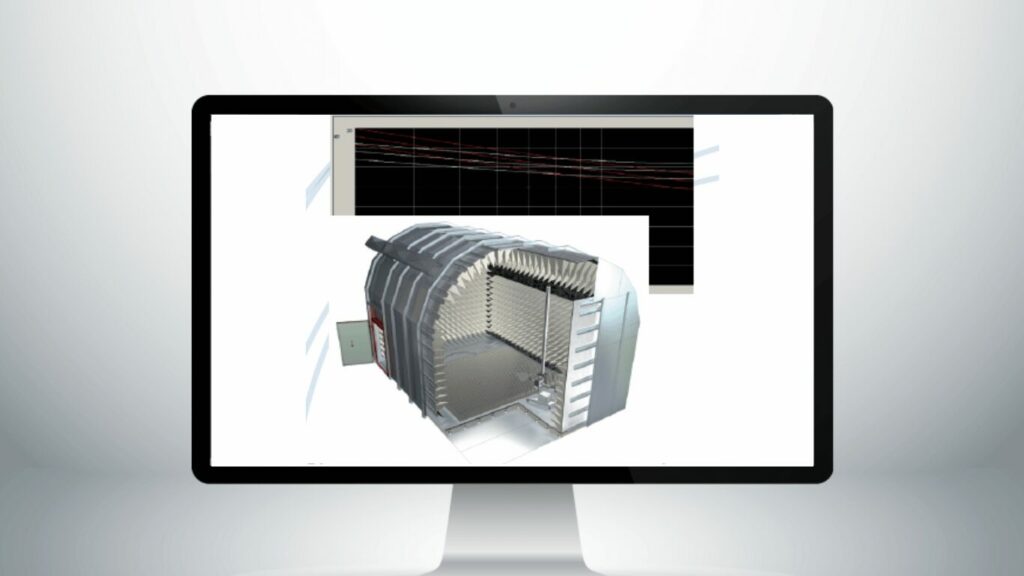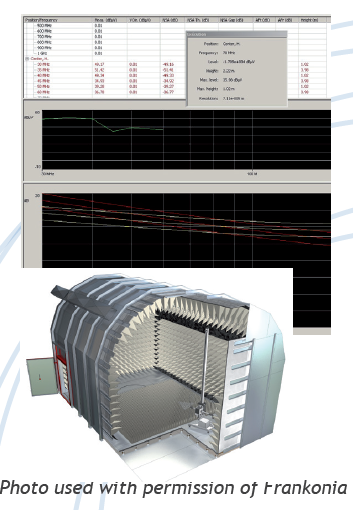
Applicable standards
- IEEE (Institute of Electrical Electronics Engineers)
- IEC (International Electrotechnical Commission)
- ETSI (European Telecommunications Standards Institute), etc.
Features
Our software for BAT-NSA / SVSWR is designed for anechoic chambers or open area test site (OATS).
It allows two types of measurement:Normalized Site Attenuation (NSA): Measured in accordance with CISPR 16-1-4 and ANSI C63.4 in semi- and fully anechoic environments.
The volumetric method is applied, with a specified test volume diameter at 3 m, 10 m or other distances.
The height sweep of the receiving antenna is adjusted between 1 m and 4 m above the ground plane.SVSWR measurement: Carried out to CISPR 16-1-4 in a frequency range from 1 GHz to 18 GHz, with omnidirectional broadband antennas in horizontal and vertical polarization.
NSA / SVSWR
BAT-NSA (Normalized Site Attenuation) and SVSWR (Site Voltage Standing Wave Ratio) are essential for guaranteeing the performance and conformity of radio frequency (RF) of Chambers and OATS
These technologies enhance the quality of wireless communication systems, while complying with international standards.
